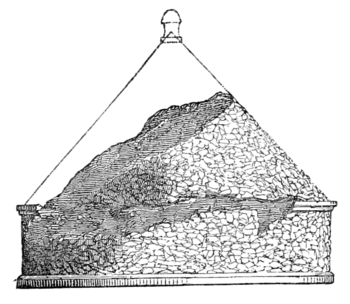been thoroughly explored by Dr. Olfers.[1] Its dimensions are very considerable, and very nearly those given by the father of history. It is 1180 feet in diameter, or about twice as much as Silbury Hill, and 200 feet in height, as against 130 of that boasted monument. The upper part, like many of our own mounds, is composed of alternate layers of clay, loam, and a kind of rubble concrete. These support a mass of brickwork, surmounted by a platform of masonry; on this still lies one of Steles, described by Herodotus, and another of the smaller ones was found close by.
There is another group of tombs, called those of Tantalais, found near Smyrna, which are considerably older than those of Sardis, though their date cannot be fixed with such certainty as that last described. Still there seems no good reason for doubting that the one here represented may be as old as the eleventh or twelfth century B.C., nor does it seem reasonable to doubt but these tumuli which still stand on the plain of Troy do cover the remains of the heroes who perished in that remarkable siege.[2]
A still more interesting group, however, is that at Mycenæ, known as the tombs or treasuries of the Atridæ, and described as such by


